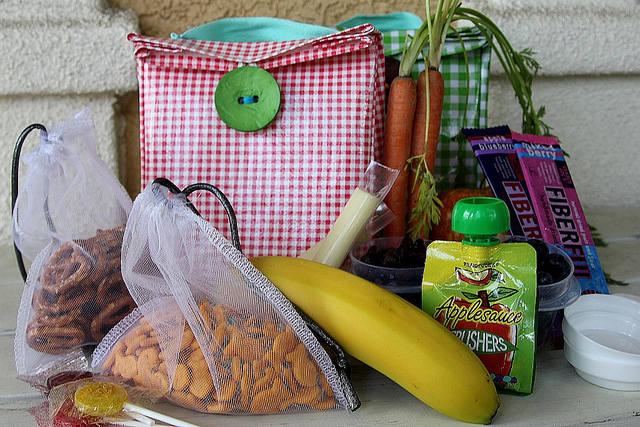
Wellness :: Kids and Healthy Food Choices
Being a parent can a frustrating struggle, especially when you are engaged in a battle to get your rambunctious toddler, child, or preteen to eat healthier foods. We’ve all been there at one time or another. At the end of our rope and still the little tyke screws up his nose at the nutritious peas that you have provided him. Then comes the demand for curly fries cooked in the deep fryer.
Fear not—if you begin young enough—there are methods to instill a healthy eating mindset. Below I will provide some methods that can be used to guide your children toward healthier foods—as well as a few methods that you should steer clear of at all costs.
Why Is Teaching Children to Eat Healthy Important?
Studies in the British Journal of Nutrition and the Journal of American College of Nutrition suggest that the eating habits that we instill in children when they are young persist into adulthood. The tie between childhood eating habits and adult eating habits is not a pre-destined path. Some children who are fed junk food throughout their childhood turn into health buffs when they hit adulthood. These individuals are the minority. The majority of children will not steer away from their acquired tastes.
Methods to Promote Healthy Eating
Monkey See, Monkey Do. Children, especially young children, learn their eating habits as they watch their parents and siblings interact with food. If we want our children to eat healthy, we must be the person that we want them to be. As they observe us eat fruits, vegetables, and other healthy foods, they will learn that healthy foods are the way to go.
Know Their Dietary Needs. Forcing a child to finish their plate of food is something that most parents have done a time or two. Our own parents have done it to us, and we in turn have carried on the tradition. Such methods are unnecessary for children who are a healthy weight. Babies and children know when they should stop eating. When children are told to eat past the point where they are full, they lose the ability to self-regulate their dietary intake. This will lead to overeating and weight problems in later years. As parents we need to be aware of that. It is our responsibility to know how much our children should eat.
Acquired Tastes. Young children tend to have a particularly bad case of food neophobia. Fear neophobia is the fear of trying new foods. They will be predisposed to dislike a new food that has a weird taste, texture, or smell. In order to like a food, they must get past the discomfort that the newness causes. Generally urge a child to try a new food at least 10 times before accepting that they genuinely dislike it.
Limit Live TV Exposure or Watch Commercial Free Entertainment. Television rots the brain. I joke. In all seriousness you should be concerned about the effect that advertising has on your children’s food choices. The majority of commercials found between children’s television programs promote unhealthy foods. Research has found that families, who watch more television, also consume a higher number of unhealthy foods. If you choose, your children can still watch television. They can fast forward through the commercials or you can purchase the seasons of their favorite shows for them.
Methods That Appear to Promote Healthy Eating, But Do Not
As parents who are at their wits end it is easy to utilize “easy quick fix” methods to increase their current intake of healthy food. There are three quick fix methods that you should never use to promote healthy eating: bribes, punishments, and restrictions.
Bribes: “If you eat those peas, you can have ice cream.” You would think that this method would work, but in the long run it actually decreases the desire for healthy foods. What it actually does is it teaches children that ice cream is desirable and peas are undesirable.
Punishment: “Eat that food, or you’ll go to bed early.” This tactic links the healthy food with a negative emotions and actions. In the long run it will decrease the likelihood that children will eat healthy.
Restrictions: “You know you’re not allowed to have junk food.” It’s a fact that humans crave fatty and sugary foods. We all experience those cravings. We need to teach our children to eat balanced meals. By restricting food, they become forbidden things. Eventually they will have more freedom and begin eating the fatty foods. At that point they will binge eat fatty and sugary foods. Better to teach children how much fatty foods they can eat and still be relatively healthy.
As parents we have a hard and vital task: teaching our children how to eat in a way that will ensure a long and healthy life. Armed with the proper knowledge, we can impart the right knowledge and values to our children. It’s not a simple process, but knowing which tactics can be used and which should not is a good place to start.
What are some steps you take to ensure your kids are making healthy food choices?
Photo courtesy of Flickr: https://www.flickr.com/photos/newsusa/5268321049/sizes/z/in/photostream/
Top Photo courtesy of Flickr: https://www.flickr.com/photos/redcarcleveland/7555606976/sizes/z/in/photostream/
0




